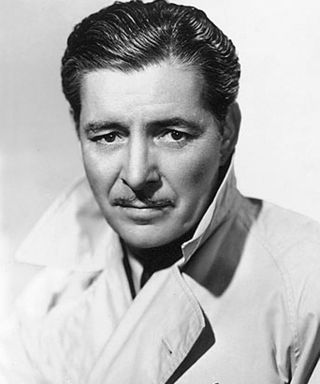
Ronald Charles Colman was an English-born actor, starting his career in theatre and silent film in his native country, then immigrating to the United States and having a highly successful Hollywood film career. He starred in silent films and successfully transitioned to sound, aided by a distinctive, pleasing voice. He was most popular during the 1920s, 1930s and 1940s. He received Oscar nominations for Bulldog Drummond (1929), Condemned (1929) and Random Harvest (1942). Colman starred in several classic films, including A Tale of Two Cities (1935), Lost Horizon (1937) and The Prisoner of Zenda (1937). He also played the starring role in the Technicolor classic Kismet (1944), with Marlene Dietrich, which was nominated for four Academy Awards. In 1947, he won an Academy Award for Best Actor and Golden Globe Award for Best Actor for the film A Double Life.
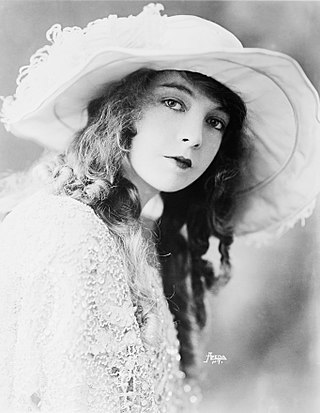
Lillian Diana Gish was an American actress, director, and screenwriter. Her film-acting career spanned 75 years, from 1912, in silent film shorts, to 1987. Gish was called the "First Lady of American Cinema", and is credited with pioneering fundamental film performance techniques. In 1999, the American Film Institute ranked Gish as the 17th greatest female movie star of Classic Hollywood cinema.

Dorothy Elizabeth Gish was an American actress of the screen and stage, as well as a director and writer. Dorothy and her older sister Lillian Gish were major movie stars of the silent era. Dorothy also had great success on the stage, and was inducted into the American Theater Hall of Fame. Dorothy Gish was noted as a fine comedian, and many of her films were comedies.
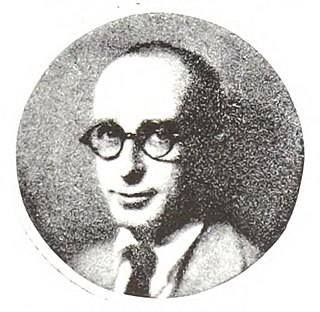
James Edward Abbe was an American photographer.

Romola (1862–63) is a historical novel written by Mary Ann Evans under the pen name of George Eliot set in the fifteenth century. It is "a deep study of life in the city of Florence from an intellectual, artistic, religious, and social point of view". The story takes place amidst actual historical events during the Italian Renaissance, and includes in its plot several notable figures from Florentine history.
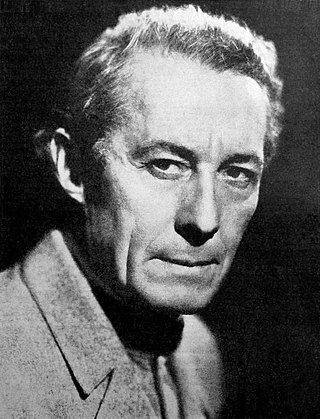
Henry Brazeale Walthall was an American stage and film actor. He appeared as the Little Colonel in D. W. Griffith's The Birth of a Nation (1915).
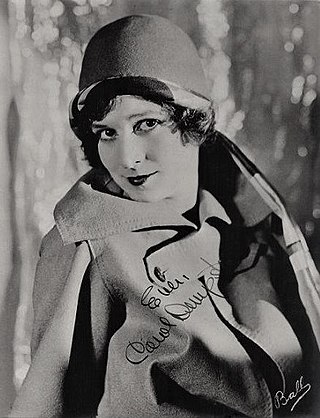
Carol Dempster was an American film actress of the silent film era. She appeared in films from 1916 to 1926, working with D. W. Griffith extensively.
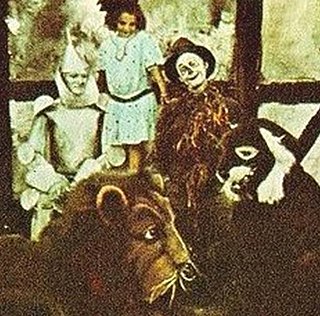
Romola Remus Dunlap was an American actress who was the first to play Dorothy Gale in film, in the 1908 multimedia stage/film production The Fairylogue and Radio-Plays, an adaptation of the Oz books. She worked directly with author L. Frank Baum, the creator of the character.

An Unseen Enemy is a 1912 Biograph Company short silent film directed by D. W. Griffith, and was the first film to be made starring the actresses Lillian Gish and Dorothy Gish. A critic of the time stated that "the Gish sisters gave charming performances in this one-reel film". The film was shot in Fort Lee, New Jersey where early film studios in America's first motion picture industry were based at the beginning of the 20th century. Consistent with practice at that time, the actors in the cast and their roles are not listed in the film..

Gold and Glitter is a 1912 American silent drama film co-directed by D. W. Griffith and Frank Powell. Lillian Gish, in the leading female role, was praised for its variety of emotion, in comparison to her previous roles.

True Heart Susie is a 1919 American drama film directed by D. W. Griffith and starring Lillian Gish. A print of the film survives in the film archive of the British Film Institute. The film has seen several VHS releases as well as a DVD issue.
The White Sister is a 1909 novel by Francis Marion Crawford and the title of various film adaptations:

The White Sister is a 1923 American silent drama film starring Lillian Gish and Ronald Colman, directed by Henry King, and belatedly released by Metro Pictures. It was based on the 1909 novel of the same name by Francis Marion Crawford. It is the second of four adaptations of the novel, preceded by a 1915 production and followed by a 1933 sound film, starring Helen Hayes and Clark Gable, and a 1960 Mexican production.

The Scarlet Letter is a 1926 American silent drama film based on the 1850 novel of the same name by Nathaniel Hawthorne and directed by Swedish filmmaker Victor Sjöström. Prints of the film survive in the MGM/United Artists film archives and the UCLA Film and Television Archive. The film is now considered the best film adaptation of Hawthorne's novel.

Ronald Colman began his career as an actor on the stage following his service in the British Army during World War I. He made his film debut in an unreleased two-reeler titled The Live Wire (1917). After achieving minor success on the stage and in British films, he immigrated to the United States in 1920. There he continued his acting with only moderate success until he was offered the lead opposite Lillian Gish in The White Sister (1923). The film's popularity and critical acclaim led to Colman becoming a major star and also a romantic idol of the silent cinema. As a contract player for Samuel Goldwyn, Colman was cast as leading man to many of the top actress as the silent era. In five of his silents he formed a romantic team with Hungarian actress Vilma Bánky.

London is a 1926 British silent romantic drama film, directed by Herbert Wilcox and starring Dorothy Gish. The film was adapted by Wilcox from a short story by popular author Thomas Burke. The British Film Institute considers this to be a lost film.

Remodeling Her Husband is a 1920 American silent comedy film that marked the only time Lillian Gish directed a film.

The Bright Shawl is a 1923 American silent historical drama film directed by John S. Robertson and produced by and starring Richard Barthelmess. This film, based on a novel by Joseph Hergesheimer, had several days of filming on location in Cuba. It features the first confirmed film appearance of Edward G. Robinson.

The Beautiful City is a 1925 American silent drama film directed by Kenneth Webb and starring Richard Barthelmess, Dorothy Gish, and William Powell. For their mother's sake, a man takes the blame for a robbery committed by his brother and his brother's gangster boss.

Betty Jewel was an American actress active in the 1920s.



















